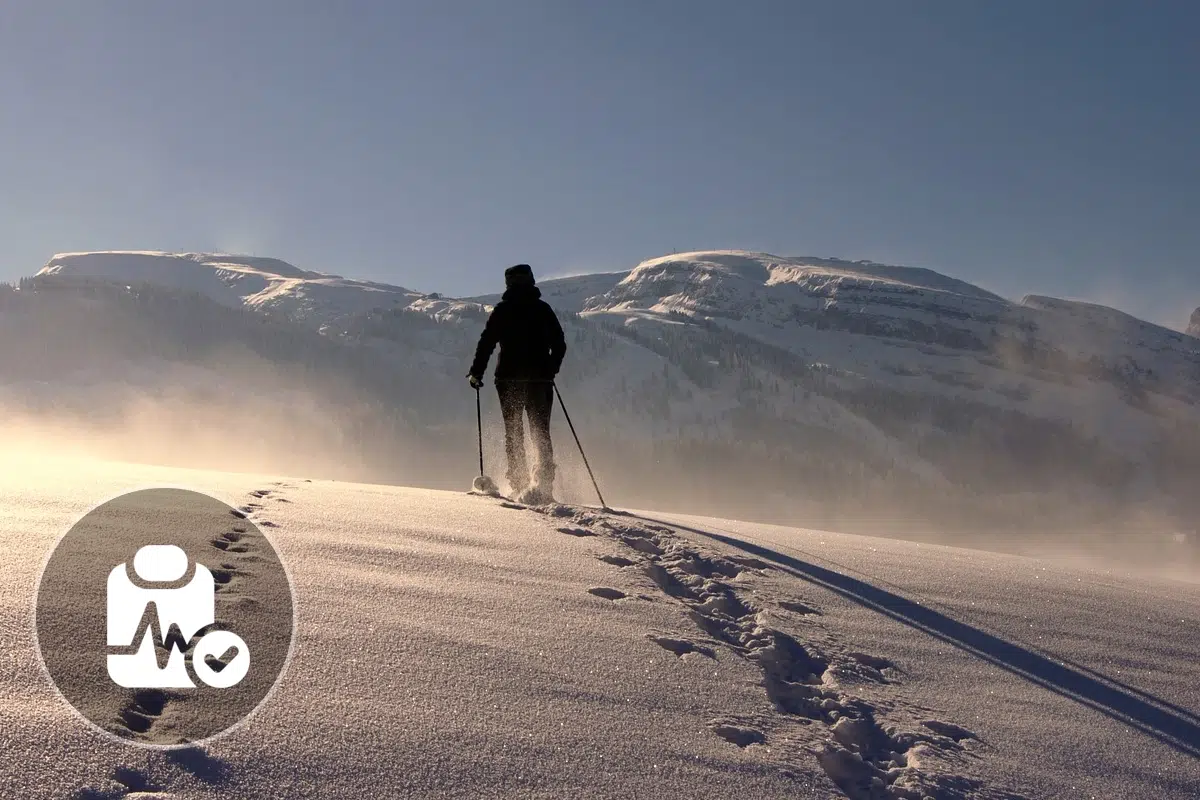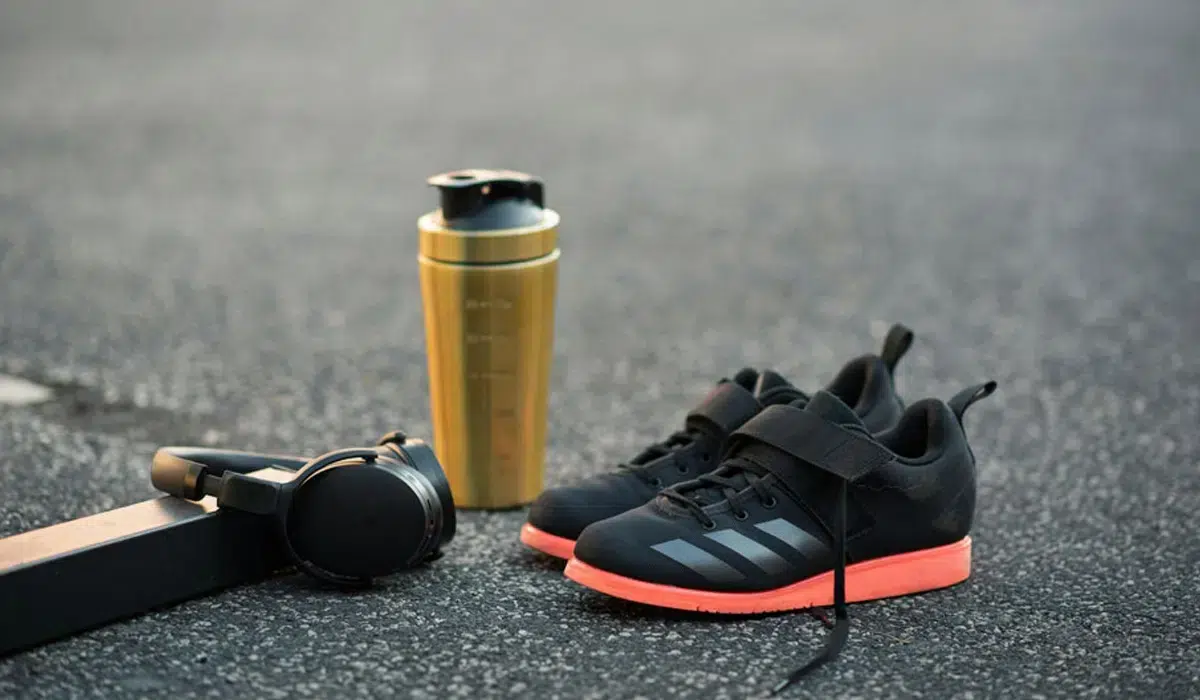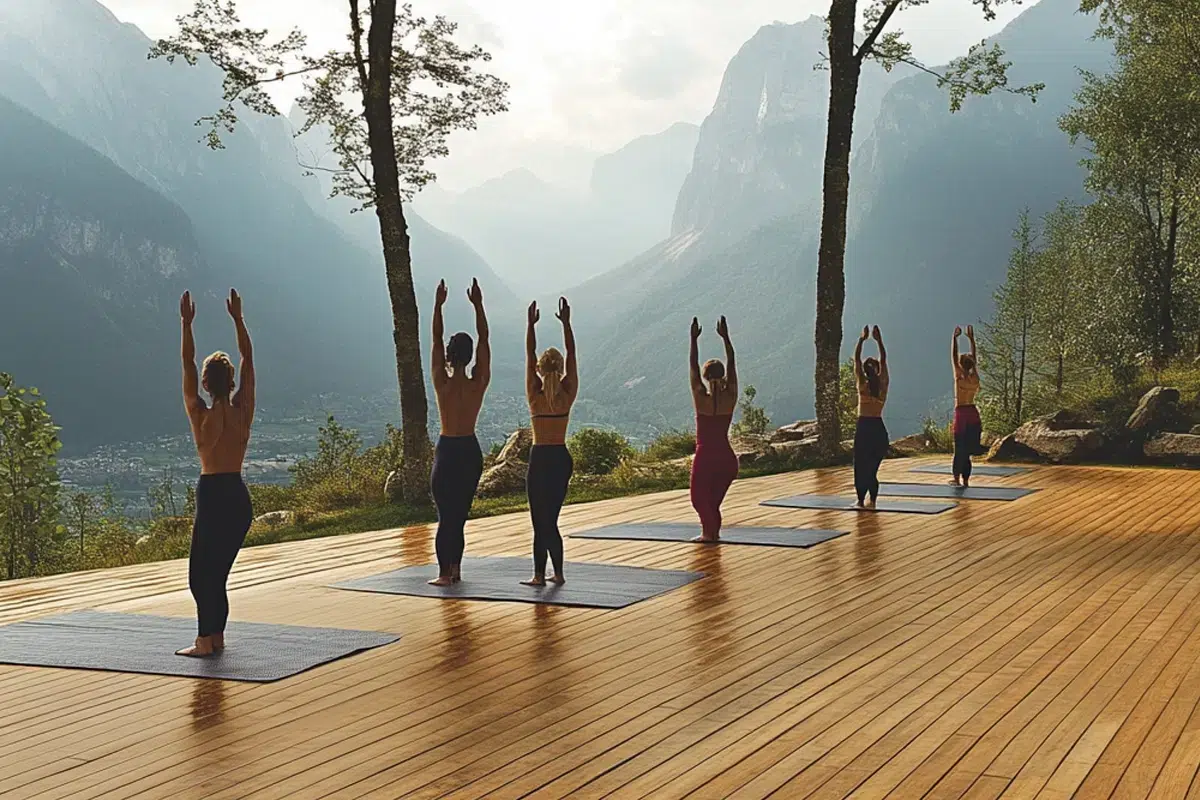Show summary Hide summary
- What are the health benefits of snowshoeing?
- More information about snowshoeing
- the TOP 5 health benefits of snowshoeing!
- What are the disadvantages and contraindications of snowshoeing?
- What is snowshoeing and how does it work?
- Other winter sports: enjoy winter thrills with snow and glide sports
- Discover the health benefits of other sports!
What are the health benefits of snowshoeing?

Everything you need to know about snowshoeing
What are the health benefits of snowshoeing? Use the tool below to find out all the benefits of snowshoeing and discover whether this sport meets your goals and expectations.
More information about snowshoeing
Is snowshoeing good for your health? Is it a good sport that’s accessible to everyone? Whether you’re a beginner or an experienced snowshoer, you’ll find in the list below the benefits but also the problems you might encounter when snowshoeing.

the TOP 5 health benefits of snowshoeing!
Want to get some exercise and enjoy the snowy landscape? Why not try snowshoeing? Snowshoeing or snowshoe trekking is a leisure activity that allows you to exercise and keep fit in winter. Snowshoeing has many benefits for both body and mind.
- Snowshoeing strengthens the heart. The endurance effort involved, combined with the cold, helps increase cardio-respiratory function and boosts the immune system.
- Snowshoeing improves balance and movement coordination.
- Snowshoeing helps you get a better night’s sleep after a day’s outing
- Snowshoeing promotes weight loss, with a calorie burn of at least 300 calories for 1 hour of snowshoeing.
- Snowshoeing helps you recharge your batteries, relax and reduce stress. It’s also a great way to enjoy the benefits of daylight, while maintaining your vitamin D levels during the winter months.
What are the disadvantages and contraindications of snowshoeing?
There are no major contraindications to snowshoeing. However, the effort required to practise this sport can be intensive. As a result, snowshoeing may not be recommended in certain cases (cardiovascular problems, respiratory problems, pregnancy, etc.). You need to be in good physical condition. As with any physical activity, there is no such thing as zero risk. The most common injuries are cramps, sprains and tears. So it’s important to prepare, warm up and stretch your body beforehand to minimise the risk of injury.
What is snowshoeing and how does it work?
Snowshoeing is an outdoor activity that involves walking on snow-covered mountains with two plastic boards on your feet. Although snowshoeing used to be the preserve of Amerindian hunters, it only became popular in the 90s. Fun, economical and accessible to all, snowshoeing offers a wide range of activities, from hiking to discovering the most prestigious peaks.
What equipment is needed to get started and enjoy the benefits of snowshoeing?
To enjoy snowshoeing, you need a certain amount of equipment, available at all prices in sports shops such as Decathlon. Make sure you have the right snowshoes, poles and boots. When it comes to clothing, adopt the 3-layer technique to keep warm: a breathable first layer (underwear that breathes close to the body), an insulating second layer (fleece or down jacket) and a waterproof outer layer (windbreaker or mackintosh).
Other winter sports: enjoy winter thrills with snow and glide sports
Winter sports are perfect for enjoying the cold season while strengthening muscles and improving balance. Discover these winter activities to stay active and healthy:
- Cross-country skiing: Improve endurance and strengthen legs on cross-country ski trails.
- Downhill skiing: Speed down snowy slopes while working on agility and responsiveness.
Everything you need to know about snowshoeing
Discover the health benefits of other sports!
All sports in detail!




















































